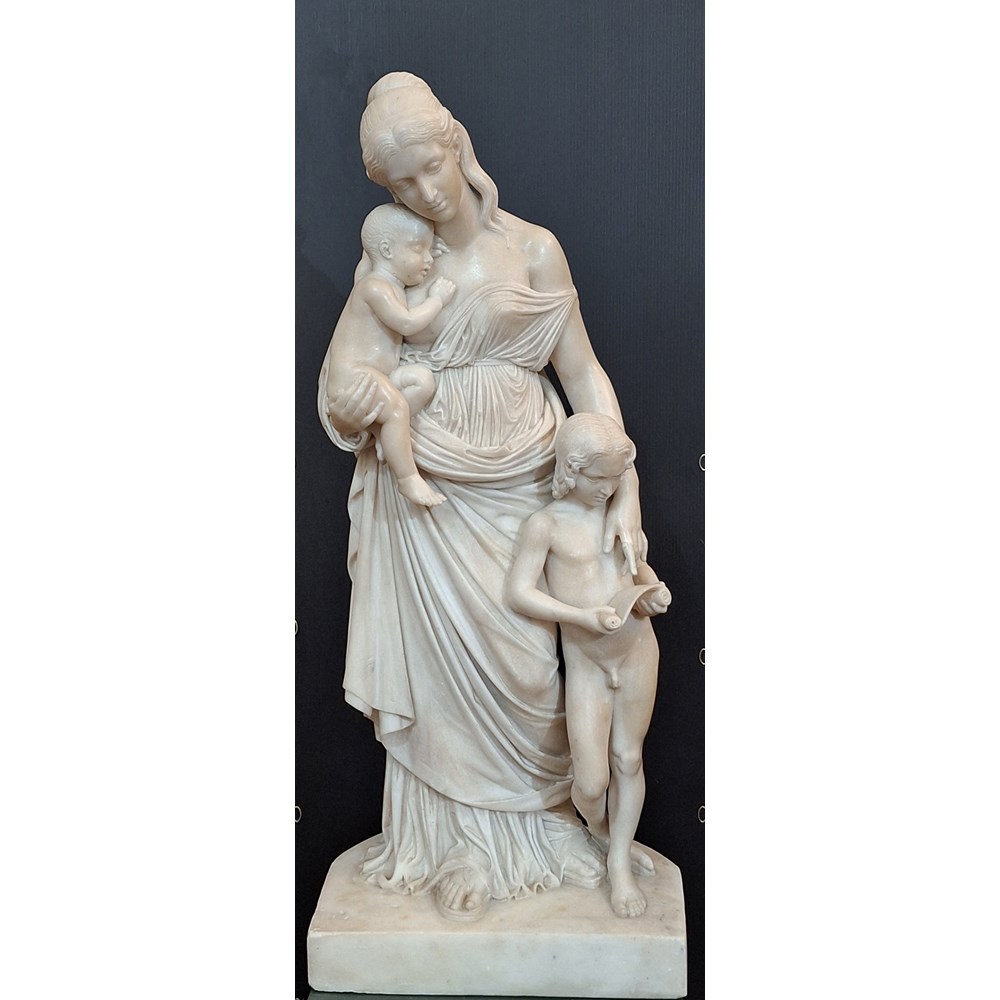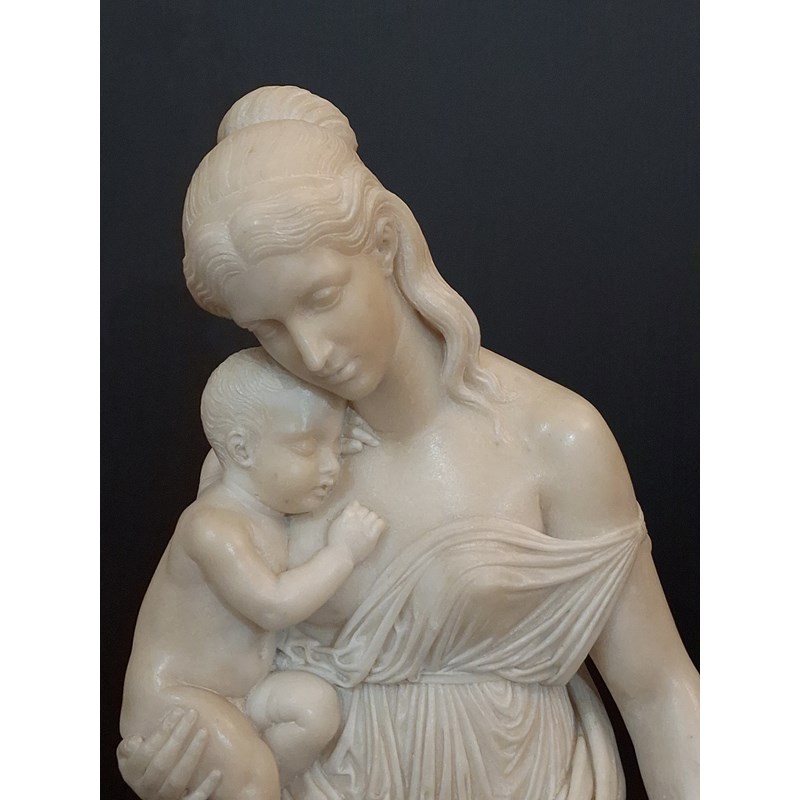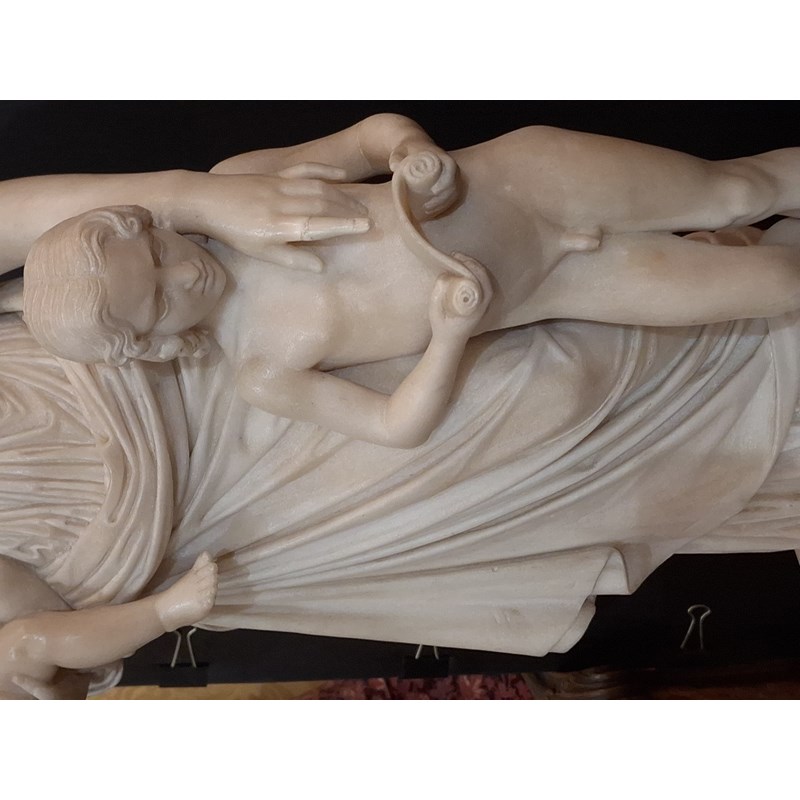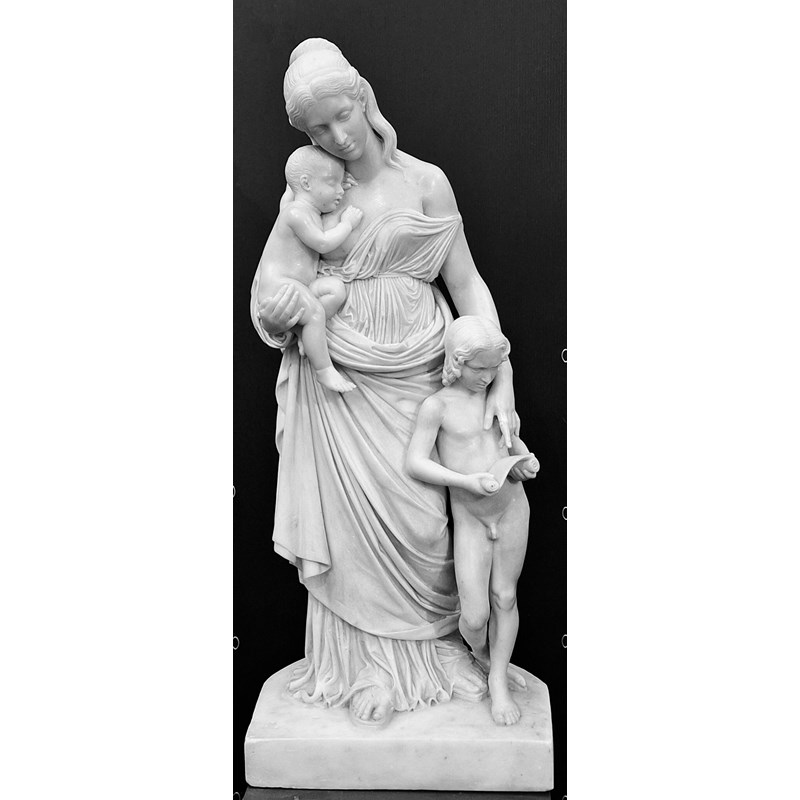LORENZO BARTOLINI: STATUA IN MARMO RAFFIGURANTE LA CARITA' EDUCATRICE. XIX° SECOLO.
Lorenzo Bartolini (Prato -1777- Firenze-1850)
La splendida scultura qui presentata misura cm- 72 di altezza e cm. 30 x20 di base.+
La qualità esecutiva ed interpretativa delle figure ed il pathos espresso dal gruppo marmoreo permettono di collocarlo nell’ambito più ristretto del Bartolini, di cui sono conosciuti diversi bozzetti.
Lorenzo Bartolini was born on 7 January 1777 in the town of Savignano, in the province of Prato and was one of the most important nineteenth-century sculptors.
Bartolini’s sculptures deal with monumental themes and political figures of his time but also very personal and intimate themes. The Nymph with the Scorpion, the Nymph Arnina, Trust in God as well as Educating Charity: these are works of impressive realism.
The Charity Educator was commissioned from Bartolini to decorate the Chapel of the Villa del Poggio Imperiale in Florence for the Grand Duke Ferdinando III. In 1820 the artist had conceived the overall composition and made it known in a supplication to the grand duke but the plaster was completed only two years later, in 1822.
Years passed and in 1835 the long-completed sculptural group was still in Bartolini’s studio.
Grand Duke Leopold II, successor of Ferdinand II from 1824, went to see it in person right in the artist’s workshop and was impressed.
The Charity Educator was brought to Palazzo Pitti in 1836 and placed on the ground floor and between 20 and 22 July 1861 the work was placed where you can appreciate it today, in the center of the Sala dell’Iliade.
The work is undoubtedly a political sculpture, paraphrasing the words used by Bartolini himself. The work was called “educatrice” for the first time by Gabriele Pepe in a letter written to Gino Capponi and an engraving of the work was published on the frontispiece of Lambruschini’s magazine “L’educatore”.
The older boy, forced by his mother to study, was the way to renew the most classic iconography of charity. The work was a not too veiled allusion to the paternal Lorraine policy which seemed to be attentive to the needs of its subjects, both material and spiritual.
Bartolini did not forget to also underline the value of evangelical charity, shown through the inscription placed on the scroll held in the hand of the child.





